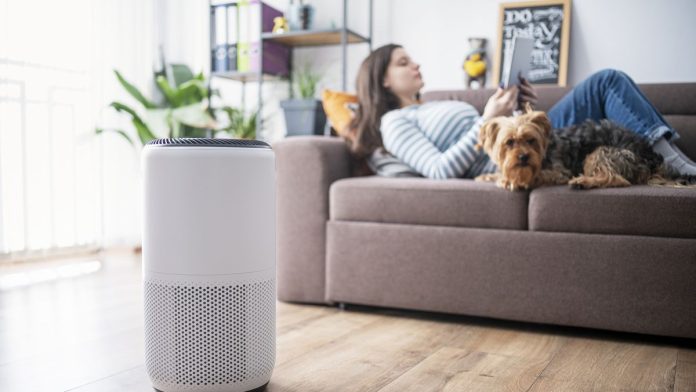Air purifiers are devices designed to clean the air in your environment by eliminating pollutants, dust, and allergens from the air. These devices contain a filter that traps contaminants and toxins from the air that are known to cause health problems. By doing this, air purifiers can help create a healthier environment, especially for people with allergies or respiratory problems. Not only can they improve indoor air quality, but some air purifiers also emit negative ions, which may help reduce stress and improve overall well-being.
Investing in an air purifier like a triad air purifier for your home or office is wise, as it can help keep you and those around you breathing cleaner air.
Assessing the air quality in your bedroom is crucial since we spend one-third of our time there. Fortunately, improving the scent and air quality in your personal space is as easy as following these ten simple steps. Not only will your room smell fresh, but it will also enhance the indoor air quality of your entire home.
Table of Contents
Do All Pleasant Smells Indicate Good Indoor Air Quality?
Assuming the quality of air based on scent can be misleading. Air fresheners, scented candles, and other fragranced products are marketed for making homes smell pleasant. However, relying on the scent to determine air quality may not be an accurate measure.
Discover the potential health risks associated with volatile organic compounds (VOCs), chemicals that can be found in everyday scented products such as air fresheners, personal care items, and cleaning supplies.
Study found 133 different VOCs emitted from these products, with 24 of them classified as toxic or hazardous under U.S. federal laws. Stay informed and keep yourself and your loved ones safe by learning about the presence of VOCs in common household products.
Eliminating unpleasant odors in your home is crucial, and simply masking them with harsh chemicals isn’t the best approach. Begin by identifying the source of the odor and taking effective measures to eradicate it completely. Start with discovering the cause, and say goodbye to unpleasant smells for good.
What Is Causing The Unpleasant Odor In Your Room?
Identifying the source of an unpleasant odor in your room can be a challenge. However, identifying the common culprits can make things easier. Read on to discover the top numbered clues to investigate. For instance, if you notice a musty smell, it could be due to microbial volatile organic compounds (mVOCs). Don’t let a bad smell linger any longer, get to the root of it with these helpful hints.
According to the Environmental Protection Agency, the detection of strong or pungent odors, known as mVOCs, indicates the potential presence of mold growth. This type of odor is commonly linked to a moldy or musty smell, requiring further investigation of your building.
Discovering mold in your bedroom is not uncommon. It can hide in your walls, windowsills, under carpets, or even in your bathroom. Some mold may only affect the appearance of your space, but according to the Centers for Disease Control and Prevention, visible or noticeable mold can indicate health risks. Our article provides tips for effectively removing mold from carpets to ensure a safe and healthy living environment.
While mold is often the culprit for unpleasant odors, there are other factors that could be contributing to the foul smells in your room. Consider the following potential sources of stink:
Pet Accidents
Even well-trained pets can have accidents, leaving you with lingering smells that can last for months. If not cleaned up quickly, pet urine can even lead to mold or mildew growth by seeping into the carpet padding. Don’t let these issues persist, take proactive steps to address them and keep your space clean.
Leftover Food
Eliminate unpleasant odors caused by old food or drink containers. Even if you’re sure there’s no remaining food or drink in your space, stubborn stains and spills can still generate unwanted smells.
Dirty Laundry
Keep your laundry hamper clean to avoid breeding bacteria and strange odors. According to a study published in the Journal of Chromatography A, bacteria from the skin can cause sweat to develop an unpleasant scent. Additionally, six types of volatile organic compounds have been found on dirty laundry. Don’t let your laundry become the source of strange smells, keep your hamper tidy.
Stagnant Air
Stifling air can collect and harbor unwelcome dust, mold spores, and tobacco smoke particles – and this problem becomes even more pronounced during heat and humidity. Without enough ventilation, your living space becomes a breeding ground for these pesky contaminants. Take control of your air quality by investing in proper airflow management.
Dust
Dust is more than just an unsightly accumulation of particles. It’s a composition of unpleasant components such as dead skin, pollen, pet hair, dander, insects, their droppings, and dirt. And that’s only the tip of the iceberg. The presence of dust not only creates a dirty impression but also harms the air quality and emanates an unpleasant musty aroma.
What Are The Different Kinds Of Gaseous Pollutants?
Indoor air quality can be negatively impacted by invisible chemicals that can harm our health. Even in our own homes, harmful gaseous pollutants may be present.
Building materials, furniture, personal care products, and household cleaners can all release volatile organic compounds (VOCs) into your living space. These harmful compounds have been linked to unpleasant symptoms such as eye, throat, and nose irritation, headaches, and nausea, as reported by the EPA.
Additionally, mold growth causes the emission of mVOCs, which can lead to symptoms like headaches, dizziness, and nausea. While the health effects of mVOC exposure are still unknown, it’s better to be safe than sorry when it comes to the air you breathe.
















